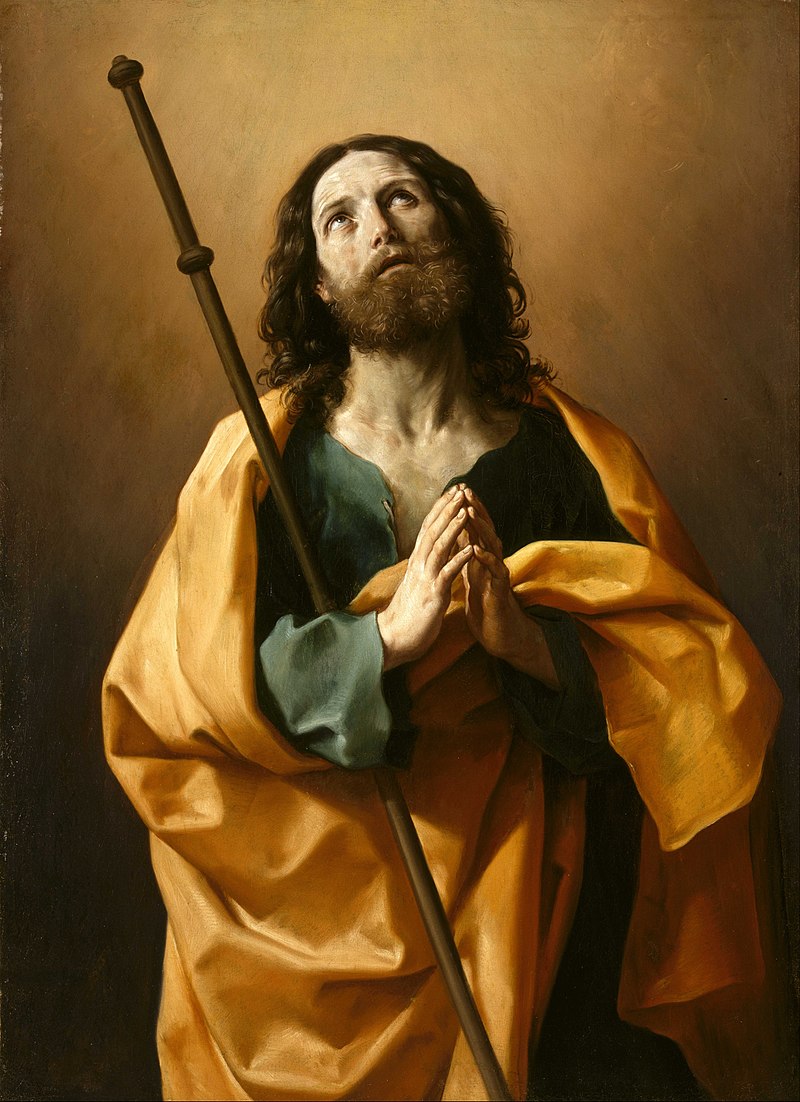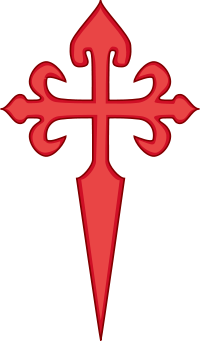|
James the Great became the third (or fourth) disciple along with his brother John. He is known as James the Great to distinguish himself from James the Less, however, it is believed “great” meant older or taller rather than more important. James was born in around 3 AD to Zebedee and Salome in Bethsaida, Galilee and died in 44 AD.
“Going on from there, he saw two other brothers, James son of Zebedee and his brother John. They were in a boat with their father Zebedee, preparing their nets.” (Matthew 4:21) After calling Simon Peter and Andrew to discipleship, Jesus came across James and John fishing with their father. All three Synoptic Gospels mention Zebedee was their father, however, only Luke indicates that they were also Simon’s fishing partners. Jesus called to them, saying, “Don’t be afraid; from now on you will fish for people.” (Luke 5:10) So, they returned to shore and went with Jesus. The Gospels record the names of all twelve of the disciples, however, Mark goes a step further, revealing that Jesus gave James and John a nickname. “James son of Zebedee and his brother John (to them he gave the name Boanerges, which means ‘sons of thunder’)” (Mark 3:17) This is indicative of their hot-headed temper as evidenced in Luke 9:54 “When the disciples James and John saw this, they asked, ‘Lord, do you want us to call fire down from heaven to destroy them?’” Jesus had sent his disciples to a Samaritan village to prepare them for his arrival; however, the villagers did not want to welcome him. James and John’s immediate response was total destruction but Jesus rebuked them and went to a different village instead. James and John are always mentioned as a pair in the Bible, therefore, they must have been very close as brothers. They also experienced things that some of the other disciples did not, for example, the Transfiguration. “After six days Jesus took with him Peter, James and John the brother of James, and led them up a high mountain by themselves. There he was transfigured before them. His face shone like the sun, and his clothes became as white as the light.” (Matthew 17:1-2) Afterwards, Jesus told them not to tell anyone what they had seen until the Son of Man had risen from the dead. “He did not let anyone follow him except Peter, James and John the brother of James.” (Mark 5:37) The same three disciples were the only ones who were allowed to come with Jesus to the home of Jairus, the Synagogue leader whose child had just died. In front of Peter, James and John, Jesus raised the girl to life but told them to not let anyone know what he had done. “As Jesus was sitting on the Mount of Olives opposite the temple, Peter, James, John and Andrew asked him privately, ‘Tell us, when will these things happen? And what will be the sign that they are all about to be fulfilled?’” (Mark 13:3-4) Once again, it was the same trio, James, John and Peter, who approached Jesus on the Mount of Olives. They wished to know when the destruction of the Temple would occur and how to read the signs for the End Times. “He took Peter, James and John along with him, and he began to be deeply distressed and troubled.” (Mark 14:33) Finally, Jesus called the same three disciples to follow him after the Last Supper, asking them to keep guard whilst he prayed. Peter, James and John all fell asleep and were awoken by Jesus on his return. He asked them twice more to keep guard and they fell asleep both times. On one occasion, James and John approached Jesus without Peter, saying, “Teacher, we want you to do for us whatever we ask.” (Mark 10:35) What they wanted Jesus to do was “Let one of us sit at your right and the other at your left in your glory.” (10:37). Jesus informed them that it was not for him to grant who sat in those places. When the other ten disciples heard about their request, “they became indignant with James and John.” (Mark 10:41) To them, it may have appeared James and John thought they were better than them and more worthy of a place by Jesus’ side. Jesus kept the peace by saying that anyone who wishes to be great must first be a servant. “For even the Son of Man did not come to be served, but to serve, and to give his life as a ransom for many.” (10:45) James’ impertinence and fiery temper may have led to his downfall. According to the Acts of the Apostles, “King Herod arrested some who belonged to the church, intending to persecute them. He had James, the brother of John, put to death with the sword.” (Acts 12:1-2) It does not mention for what reason James was killed but we do know Peter had a different fate, imprisonment, suggesting Herod had not intended to kill them all. King Herod has been identified as Herod Agrippa who was King of Judea from 41 to 44 AD. James’ date of death is estimated as 44 AD since the Bible reports Herod died soon after. According to legend, James’ remains are held in Santiago de Compostela, Galicia in northwestern Spain. Santiago means Saint James in Spanish and James is the patron saint of Spain. Yet, as the Bible tells us, James was martyred “with the sword” in Jerusalem. Due to the belief this meant he had been beheaded, another legend states his head is buried under the altar of the Armenian Apostolic Cathedral of St. James in the Armenian Quarter of Jerusalem. So, if James was killed in Jerusalem, how and why did he end up in Spain? The 12th-century bishop Diego Gelmírez claimed James once preached in Spain and, after his death, the disciples carried his body by sea to the coast of Galicia where they buried him. An ancient Galician tradition says the Virgin Mary appeared to James where he was preaching the Gospel on the banks of the Ebro River in Spain. Mary was still alive and living in Jerusalem and the reason for the supernatural visitation is either lost or unknown. Following this, James returned to Jerusalem and his death. Other traditions, however, claim James’ link to Spain to be false. According to the history of the early Church, James had never left Jerusalem. In the book of Romans, which was written after 44 AD, Paul visited Spain or “Illyricum” where he claimed Christ was not known, therefore, suggesting James had never been there. Another legend states James appeared to fight during the legendary battle of Clavijo, which took place 800 years after his death. He was subsequently named Saint James the Moor-slayer and made Spain’s patron and protector. In the 12th century, the military Order of Santiago was founded in his name and can be recognised by its insignia, which represents a sword. The sword symbolises James’ death but his emblem is also a scallop shell, which is represented by the shape of a fleur-de-lis on the insignia. Pilgrims to Santiago de Compostela often wore scallop shell symbols on their clothing. In French, a scallop shell is known as coquille St. Jacques (cockle of St. James) and in German, Jakobsmuschel (mussel of St. James). As well as Spain, James the Great is the patron saint of Guatemala, Nicaragua and Guayaquil, the second-largest city in Ecuador. His feast day changes depending on whether you are part of the Western Church (25th July), Eastern Church (30th April) or Hispanic Church (30th December). Just for fun, here is a list of the professions that have James the Great as their patron: · Veterinarians · Equestrians · Furriers (people who make fur clothing) · Tanners (leather producers) · Pharmacists · Oyster fishers · Woodcarvers
0 Comments
Your comment will be posted after it is approved.
Leave a Reply. |
©Copyright
We are happy for you to use any material found here, however, please acknowledge the source: www.gantshillurc.co.uk AuthorRev'd Martin Wheadon Archives
June 2024
Categories
All
|


 RSS Feed
RSS Feed